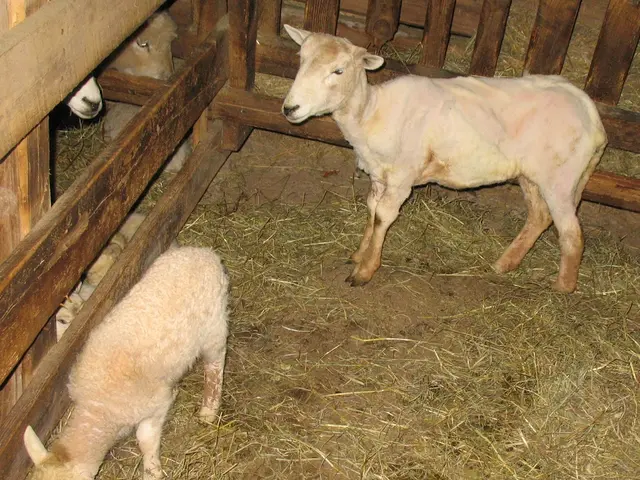Genetically Modified Species Adaptation Study: Crafting Durability for Species Preservation
Humanity faces escalating environmental challenges and cosmic threats that jeopardize Earth's living organisms, prompting the exploration of accelerated evolutionary methods. Assisted evolution research aims to bolster adaptive capacities perilously slow in the face of rapid environmental alterations, leveraging modern biotechnology and targeted genetic modifications.
The Urgent Demand for Assisted Evolution
Natural evolution transpires over millennia, but climate shifts, habitat loss, and diseases demand immediate action. Assisted evolution seeks to facilitate and expedite adaptive responses by integrating contemporary biotechnology, allowing species to thrive under novel environmental stressors.
Pioneering Techniques in Assisted Evolution
1. DNA Editing (CRISPR and Beyond): Precise tools, such as CRISPR-Cas9, enable targeted genetic alterations, providing potential advantages like drought tolerance in plants, disease resistance in animals, or enhanced metabolic performance.
2. Synthetic Biology: Designing and incorporating novel genetic circuits or pathways offers species a means of transcending evolutionary limits by creating new functions or enhancing existing ones.
3. Directed Lab Evolution: Simulating selective pressures in controlled environments enables a faster natural selection process, resulting in organisms with desired traits more swiftly than in the wild.
4. Epigenetic Modulation: Flexible gene expression modifications without altering DNA sequences offer rapid, reversible adaptations to environmental changes, potentially heritable across generations.
Ethical and Ecological Repercussions
While assisted evolution shows great promise, it sparks important debates:
- Preserving Ecological Harmony: Genetically modified organisms may adversely interact with existing ecosystems, leading to undesirable consequences.
- Maintaining Genetic Diversity: Genetic alterations should safeguard overall genetic variation, essential for long-term adaptability.
- Respecting Nature's Evolution: Striking a balance between human intervention and reverence for natural evolutionary processes and species integrity is crucial.
- Establishing Regulatory Frameworks: Guidelines are required to oversee research, deployment, and monitoring of assisted evolution technologies.
Applications for Long-Term Survival
- Climate Adaptation: Engineering crops and wild species to endure extreme temperatures, drought, or saltwater could foster resilience in the face of global warming.
- Disease Prevention: Adapting vulnerable species with enhanced immunity for combating emerging pathogens exacerbated by environmental stress.
- Ecosystem Restoration: Revitalizing depleted habitats with robust, adaptable species capable of maintaining ecosystem stability.
- Interstellar Adventure: Readying species tailored for alien environments, enhancing the likelihood of successful adaptation when exploring new worlds.
Merging Assisted Evolution with Conservation Efforts
Assisted evolution complements traditional conservation strategies by providing proactive measures to counteract sudden environmental shifts. A concerted effort among geneticists, ecologists, ethicists, and policymakers is necessary to ensure responsible development and deployment.
Looking to the Future
Assisted evolution research signifies a bold stride toward preserving life in the face of escalating planetary and cosmic challenges. By employing genetic technologies judiciously, we can equip species to navigate an uncertain future—transforming vulnerability into resilience and safeguarding biodiversity for generations yet to come.
In the language of DNA lies not just the history of life but the blueprint for its future evolution.
1. The urgency for altering natural evolutionary processes becomes apparent when considering climate shifts, habitat loss, and emerging medical-conditions, which demand immediate responses.2. As we incorporate technology into assisted evolution, we wield the power to enhance the adaptive capacities of species, utilizing genetics to endow them with desirable traits such as drought tolerance, disease resistance, or improved metabolic performance.3. In the realm of environmental science, the integration of technology with biotech presents opportunities for fostering health-and-wellness in organisms, compensating for the rapid deterioration of their habitats and ensuring their long-term survival.4. The advancements in assisted evolution may prove instrumental in navigating the realms of both health-and-wellness and environmental science, empowering species to not only survive but also thrive under unexpected environmental stressors in the context of an evolving environment.








